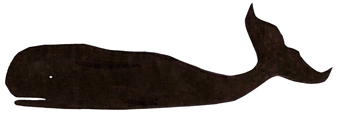| |
Whaling Schooner A. T Gifford Trapped in Ice |
|
This was the A. T Gifford
The captain of this New Bedford vessel, Captain Comer, spent two winters, 1910 to 1912, frozen in the arctic ice at Cape Fullerton In the Hudson Bay in northern Canada. (See the bottom of this page for more details)
There were many whaling ships that became trapped in ice as the whalers ventured farther away
to find whales.
Whalers were forced to do this because whales were getting scarce after years of hunting them. They often went into arctic, and antarctic waters and an early freeze would spell disaster. |
An early freeze in 1871 trapped thirty-three whaling ships in the ice. Twenty two of them were
from New Bedford.
The native Inuit had warned the captains, but to no avail as they forged ahead to disaster for the vessels.
The crew and all others aboard numbering about 1,200 people sailed and rowed small
whale boats through stormy seas and gales until they reached six of the ships that had escaped.
One of those rescue ships was the "Lagoda."
A half-scale model of it can be seen in the New Bedford Whaling Museum. You can climb aboard it.
It is amazing that they all survived.
In other similar situations, people lost their lives. 1875 brought another episode where ships were trapped in the ice.
As a final note:
The A.T. Gifford burned and sank in the Hudson Bay and all hands were lost.
The ship was returning from an Arctic trading post with furs.
Captain George
Fred Tilton of Martha's Vineyard was hired to look into the disaster.
Local Inuit told him that 3 men had landed in a small boat and had died from burns and exposure. Click the image to enlarge |
 |
|
| Cape Fullerton (Qatiktalik in Inuktitut[1]) is a cape and peninsula in Nunavut, Canada located on the northwest shores of Hudson Bay on Roes Welcome Sound and includes Fullerton Harbour. |
 |
|
|
|
|

